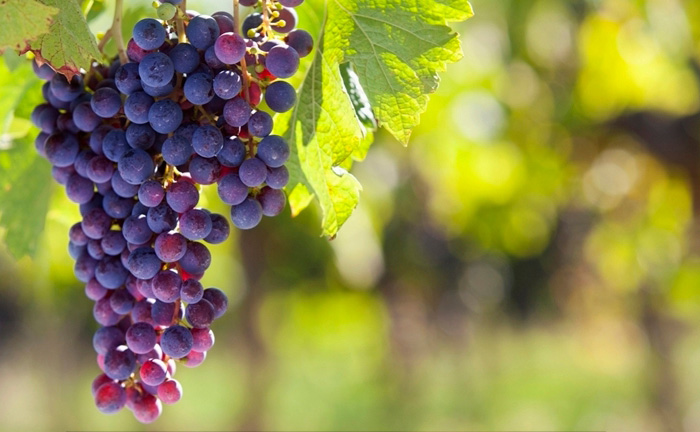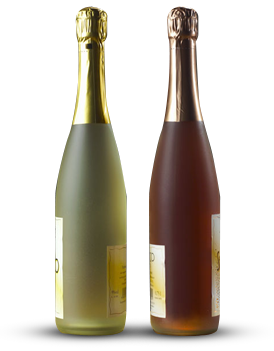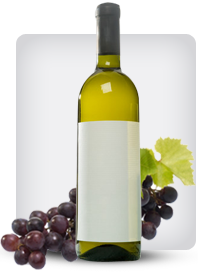

Tag: Wine
Red Wine Health Benefits
Posted on“French Paradox” may be the reason which might have sparked the interest of numerous people in red wine, considering its health benefits. This is the reason of which we may normally find a lower rate of heart related diseases in France. As such the diet of the French people is highly rich in fats, but then this seems to be against their good health, doesn’t it! Also the French people are highly found of eating more of cheese, butter, and beef as compared to their neighbors in Europe.
But now one general question which may arise in your mind is that in spite of taking a food so high in fats, how they can keep themselves away from the heart troubles. Answer is simple. According to many researchers, their food along with a lot of fats also consisted of a reasonable amount of red wine intake as compared to the rest of Europeans, and for that matter, even Westerners. Thus, this opened many windows for the researchers to study regarding the health benefits of consuming red wine, which was the answer to the above mentioned puzzle. So after conducting several thorough research, they found out that a temperate intake of red wine (one glass in case of women, and may be two in case of men) indeed helped one to protect himself/herself against diseases related to heart, cancer, and hypertension. Also it has a constructive effect over cholesterol levels.
But again, the key to this game is “moderation”. This isn’t really a case where one is good, two better, and ten best! But then, every coin always has two faces. Hence, the medical society is very vigilant to suggest red wine routines, and for some obvious reasons. Various studies have shown that in case of women who consumed alcohol daily were prone to be the potential victims of breast cancers.
As per a report in 2004 by the American Society of Cancer, the increase in the death rate due to breast cancer was 30% high in case of women who consumed alcohol daily. But if the consumption is only at the most two drinks every day, then the risk of diseases related to heart lowers from 30% to 50%. And since heart disease is the major slayer annually in case of women, these facts and figures happen to be important. Hence, if taken in a limit, wine has an overall positive impact on the female death ratio.
Scientists have pinpointed the beneficial element in red wine which is called resveratrol. Recent studies have dubbed resveratrol as an anti-aging miracle supplement.
Wine Cellars and Wine Coolers
Posted onPeople often get confused about wine cellars and wine coolers. You might be doing and not even realizing that you are and also not be aware of the difference. Well, now be informed that the disparity between the wine cooler and the wine cellar is huge although to make sure, they’ve got something to do with storing wine. Since they are both used to store wine, people forget thet they’re two different things.
WIne cellars are like rooms where people keep their wines. Wine cellars are frequently in basements where wines are stored at the right temperatures. You can think of these wine cellars as being a kind of library that’s stuffed with wine rather than books; also a library that as a controlled temperature and beautifully made. Guests might be invited inside the wine cellar if the owner wants to discuss his wine collection. These wine cellars are popular with wine enthusiasts because they’ve got lots of room to build a great wine collection.
Next you will discover the wine coolers which can be used to store wine like wine cellars are. Wine coolers are akin to miniature wine cellars. A wine cooler may fit into a wine cellar since they are small. If you have a wine collection and yet you do not have a wine cellar, then obtain a wine cooler. By keeping the wines at the proper temperature, it is possible to enjoy them more. Depending on how big your wine cooler is, you might even put it on top of your counter. There is one trusted brand that creates good wine cellars that are very affordable and great at storing wines. You will find that there are many makers of wine coolers each having a marketing strategy all their own. You may be easily swayed but consider how your wines will wind up if you choose a product that makes promises it has no intentions of delivering?
Find More Syrah Wine Articles
The Local Wine Merchant Could Improve Your Home Dining Experience
Posted onWe’ve all been told that a good wine can enhance the flavour of a meal, yet a lot of us don’t know which type of wine goes well with which meal. Your local wine merchant can help you select different wines for different meals, but for now this is a quick and easy guide that lets you distinguish between when you need a white Chardonnay and when a red Merlot is required.
Different types of wine will have different levels of tannins; this is a compound that, in wine, usually comes from the skin or the seed of the grapes. It’s particularly potent in red wines as the skins and seeds are soaked and sometimes fermented along with the flesh of the grape in order to give the wine its colour. These tannins play a part in deciding which wines go best with which food as they can clash with other flavours in the meal.
If you remember nothing else in this article, remember this; the general rule of thumb is that white wine goes with white meats and red wines go best with red meats. Although, certain ways that food is prepared can alter the wine you should have. If you’re eating Chinese food, a slightly sweet or off-dry pink wine, but you should remember to not overdo the plum and hoi sin sauces as too much of these can kill the flavour of the wine and make it tasteless.
In the summer time, it seems that it’s almost law for everybody to have at least one barbeque; whether you just stick with the traditional burgers and sausages or go a bit more extravagant with grilled king prawns, it’s recommended that you have wines that are fruity and rich, so something like a white Zinfandel would work well, or possibly a Sauvignon Blanc if you’ll be having seafood.
Indian foods and curries require wines with more body to really allow you to pick up on all the different spices and flavours; a red Merlot will work particularly well here. Other Middle Eastern dishes such as Vietnamese should be eaten with very cold and fruity pink wines such as Gewurtztraminer. Although, the suitable wine may alter depending on how spicy your meal is.
South western food, such as Mexican dishes, should typically be eaten with a fruity wine like a Riesling or Sauvignon Blanc or possibly a slightly spicy Zinfandel. If it’s south western sea food then sparkling wines work well. Bear in mind though that eating a lot of chillies will clash with a high tannin wine so you should avoid Merlots and Cabernets.
This is not a definitive list of the type of wine you should drink with your meals, and your local wine merchant will be able to let you try the wines to see which one you would prefer to go with your meal. Remember, that while wine is a pleasant drink to have with a meal, it is also alcoholic and you should always drink responsibly.
Related Merlot Wine Articles
Great Tips Culinary Landscape Wine Country Throughout the year Exploring the City from Glaciers to
Posted onBuenos Aires Cheap Flights and the Wine Roads of Argentina
Its natural beauty, history and culture make Argentina a country worth exploring, more than these, it is especially worth visiting because of its wines. The fifth leading producer of wine in the world, Argentina has eight grape-growing regions producing some of the most prestigious Malbec and Torrontes. Most of the wine production is found in the far western area of Argentina to the Andes foothills. Some of the best wine tours take you through the finest wine cellars in the province of Mendoza. Make time for Mendoza’s casinos, discos, theaters, museums, cinemas, wine bars, pubs, festivals, international cuisine and regional specialties. Two-thirds of the country’s yearly production comes from Mendoza, while the rest are produced in San Juan and La Rioja regions to the north. Catamarca, Jujuy and Salta are home to some of the world’s highest planted vineyards. Pinot noir and Chardonnay are produced in Patagonia’s southern region, covering the Río Negro and Neuquén provinces. Look for “Wine Roads” tours that include these provinces in the itinerary or time your Buenos Aires cheap flights with the National Vintage Festival, held every year on the first Saturday of March to experience the unique flavors or Argentinean wines.
Getting Around the City and Buenos Aires Cheap Flights
Buenos Aires is Argentina’s largest city. Often called “The Pearl” of South America, it showcases the intense cultural life of Argentina, dominated by tango, long coffee klatches and football. You’ll be pleased to know that there are many modes of transport available. These taxis serve the city streets 24 hours a day and you can either flag them on the streets or call for a pick up. You can either flag them on the streets or call for a pick up, the base rate is set at $ 4. 60. Flag-down rates are set at $ 4. 60, every 200 meters, 0. 46 cents is added to the base fare. These buses or colectivos have a minimum fare of $ 0. 80. Buenos Aires also has Remises or private car services with flat rates and per trip, safe and cheaper alternatives to taxis as they will always take the fastest route. Buenos Aires’ subway system is highly reliable and takes you through the city center to its outskirts. Four train terminals (Retiro, Constitución, Once and Federico Lacroze) connect the Capital Federal with the suburbs and the rest of the country. If you want to stop by Uruguay, there’s a ferry system connecting the port of Buenos Aires with the main cities of this nearby country. The city can also be discovered at your own pace aboard a bicycle, with bicycle rental operators offering tours to the Southern and Northern Circuits, as well as tours for literature, history, culture, history and ecology.
Buenos Aires Neighborhoods and Buenos Aires Cheap Flights
There are 48 barrios or neighborhoods in the city of Buenos Aires, Argentina. Several of these have gained fame by being the home of important cultural and heritage sites, being finance centers, serving as the hot spot for the arts, or by just having wealthy residents. Make time for these neighborhoods as they are homes to important cultural and heritage sites, finance centers, and arts hot spots. Palermo, a trendy residential neighborhood with restaurants, bars and boutiques; Microcentro, home to main historical spots; San Telmo, with its colonial-style houses, cobblestone lanes, and underground nightlife; Boedo, a main Tango and historical spot that offers a variety of cafes, Tango houses, libraries, and theaters; Retiro, home of Buenos Aires’s main train station and some of the most luxurious restaurants and shopping centers. If you’re looking for a quiet stroll, head out to Belgrano. This is a peaceful neighborhood that features small shops, restaurants, architectural relics and open spaces perfect for just taking in the sights and sounds of the city.
Buenos Aires Pub Crawls and Buenos Aires Cheap Flights
Pub crawls are a great way to tour a city that you’re visiting. These involve a group of people travelling around a particular city district by foot, they visit most famous or notable pubs, bars, and watering holes while sampling the best each establishment has to offer. Fast becoming popular around the world, pub crawls present travelers an opportunity to learn about a place through local drinks and spirits. So, if you’re ever headed to Argentina, this is a good way to learn more about the country and its people, while having fun while doing it. Go on pub crawls with Buenos Aires cheap flights and get to know more about the “Paris of South America” as you meet city locals while you experience its world-famous nightlife. For approximately 20 USD, you’ll get to join fellow travelers from around the world and sample the best of Buenos Aires by night. Some pub crawl packages include free pizza, complimentary shooters at each bar you visit, drink discounts, an open bar (during registration), and free admission to a club. Take a pub crawl on your birthday and you get the tour for free.
cheap flights are widely available from April to August. Get your cheap tickets and have your fill of some of the best golfing destinations in South America. Catch some
I Love Kosher Wine – An Israeli Cabernet Sauvignon
Posted onDon’t make the mistake of thinking that all Israeli wines are kosher, many are but many are not. Once upon a time Israeli wine relied on lesser quality grape varieties such as Carignan and Colombard. Happily those days are over. Actually, I’m told that some of the old Carignan fields have been nurtured to produce high-quality wines. In any case, the wine reviewed below is based on the Cabernet Sauvignon grape that stars in Bordeaux France, California, and increasingly elsewhere including Israel. This bottle comes from the Upper Galilee in northern Israel, said to be the country’s region best region for winemaking.
This wine is not only Kosher, it is Mevushal (flash-pasteurized) which essentially means it retains its Kosher quality no matter who serves it. Once upon a time Mevushal was synonymous with tasteless, the process essentially boiled the guts out of the wine. This is clearly no longer the case. Let’s give it a try.
OUR WINE REVIEW POLICY All wines that we taste and review are purchased at the full retail price.
Wine Reviewed
Dalton Safsufa Cabernet Sauvignon K/P 2007 13.5% Alcohol About $ 19.00
Let’s start by quoting the marketing materials.
Tasting Note: Medium garnet with ruby color; big nose of black current, plum and spice with earthy notes; dry, medium to full bodied, with ripe black fruit and vanilla flavores and a lingering finish. Serving Suggestion: Roast beef, grilled lamb or chicken. And now for my review.
The first sips were mouth filling. The wine was long and rich. The initial food pairing involved a commercially barbecued chicken accompanied by potatoes roasted in chicken fat. The plum taste was dominant but not unpleasant and I also tasted tobacco. This Cab showed a fine balance of fruit, acidity, and light tannins. It was palate cleansing, especially for the greasy roasted potatoes. If I had to look for something negative I suppose that it could have been more subtle.
Then I went with a slow-cooked beef stew with potatoes. Once again the wine was mouth filling. I was tasting dark fruit and dreaming of Bordeaux. Actually I was tasting dark fruit and chocolate with a lot of extract. I added some green jalapeno sauce that didn’t seem to make a difference except to intensify the chocolate.
The final meal centered around packaged meatless baked Ziti Siciliano with eggplant that I generously doused with grated Parmesan cheese. The Cabernet was chewy and refreshing but a bit flat at first. It became better later.
I finished with the cheese pairings. With a Provolone the wine was quite present, powerful, and long but it didn’t really mesh with the cheese. Translation, this wine was too good for this cheese. Then I went to a skim milk Mozzarella cheese. The wine showed good balance and length with a nice touch of oak. To inject a personal note, I wouldn’t waste a $ 20 bottle of wine on a low-market cheese.
Final verdict I would buy this wine again but definitely pay attention to the food pairings. This wine seems to go better with higher quality food. I won’t say that’s a bad sign.
popular posts
-

How to Decant Merlot Properly: A Guide to Unlocking Its Full Potential Merlot, with its plush texture and approachable profile of plum, cherry, and chocolate notes, is one of the world’s most beloved red wines
12-22 2025While often enjoyed straight from the bottle, taking the time to decant a Merlot can dramatically elevate the experience. Decanting serves two primary purposes: Read More
-

Pinot Noir Wine Subscription Reviews: A Curated Journey for the Discerning Palate For wine enthusiasts, few grapes inspire as much devotion and discussion as Pinot Noir
12-21 2025Celebrated for its elegance, aromatic complexity, and remarkable ability to express *terroir*, Pinot Noir can be both thrilling and intimidating to explore. This is Read More

